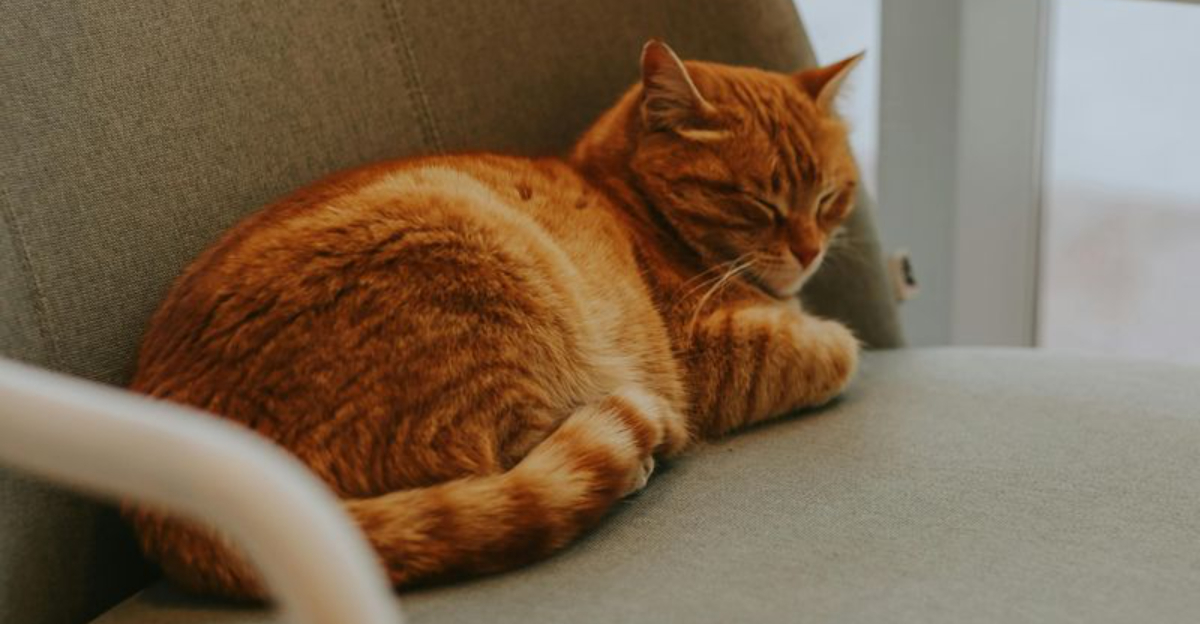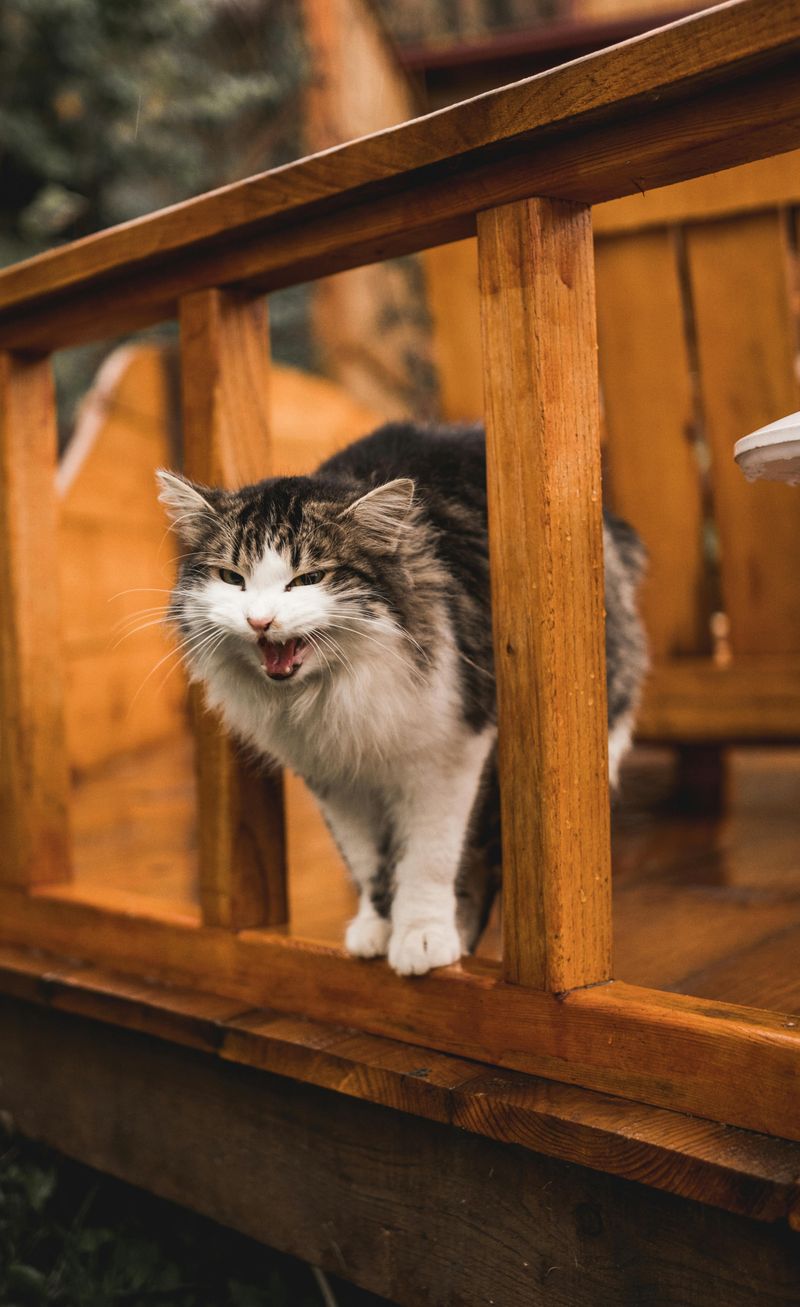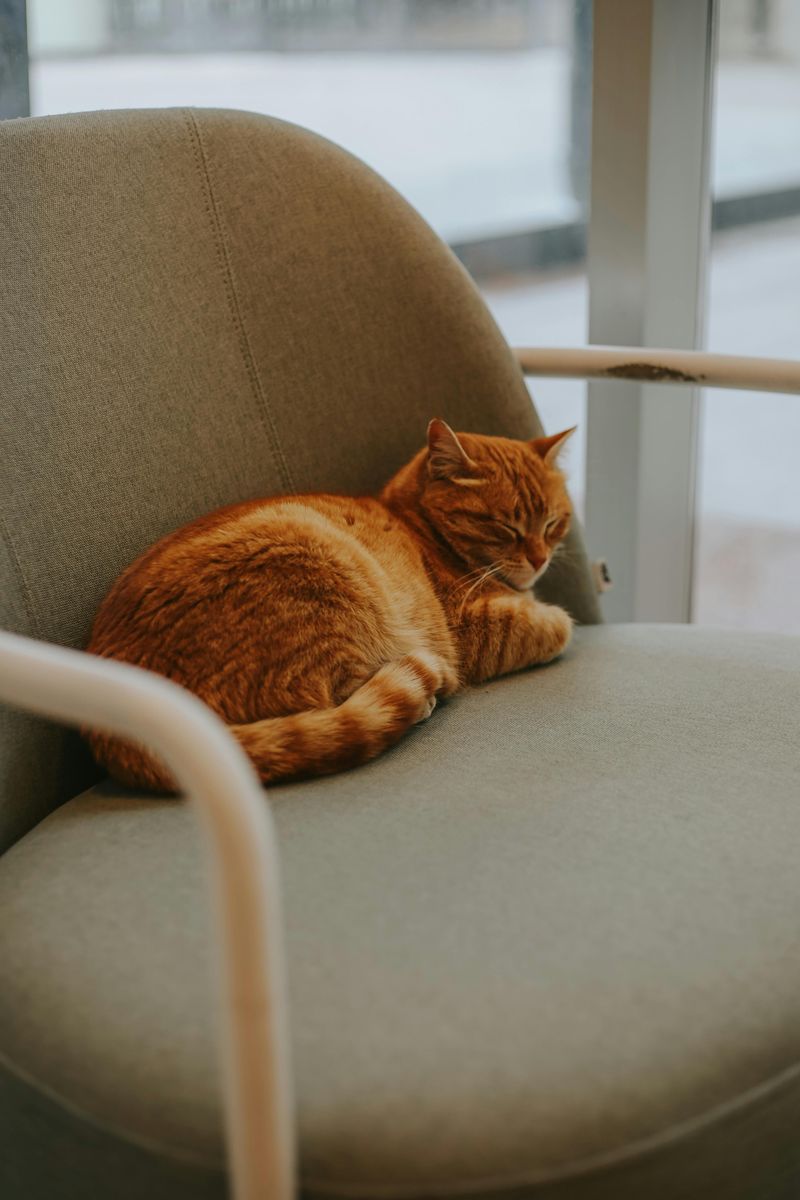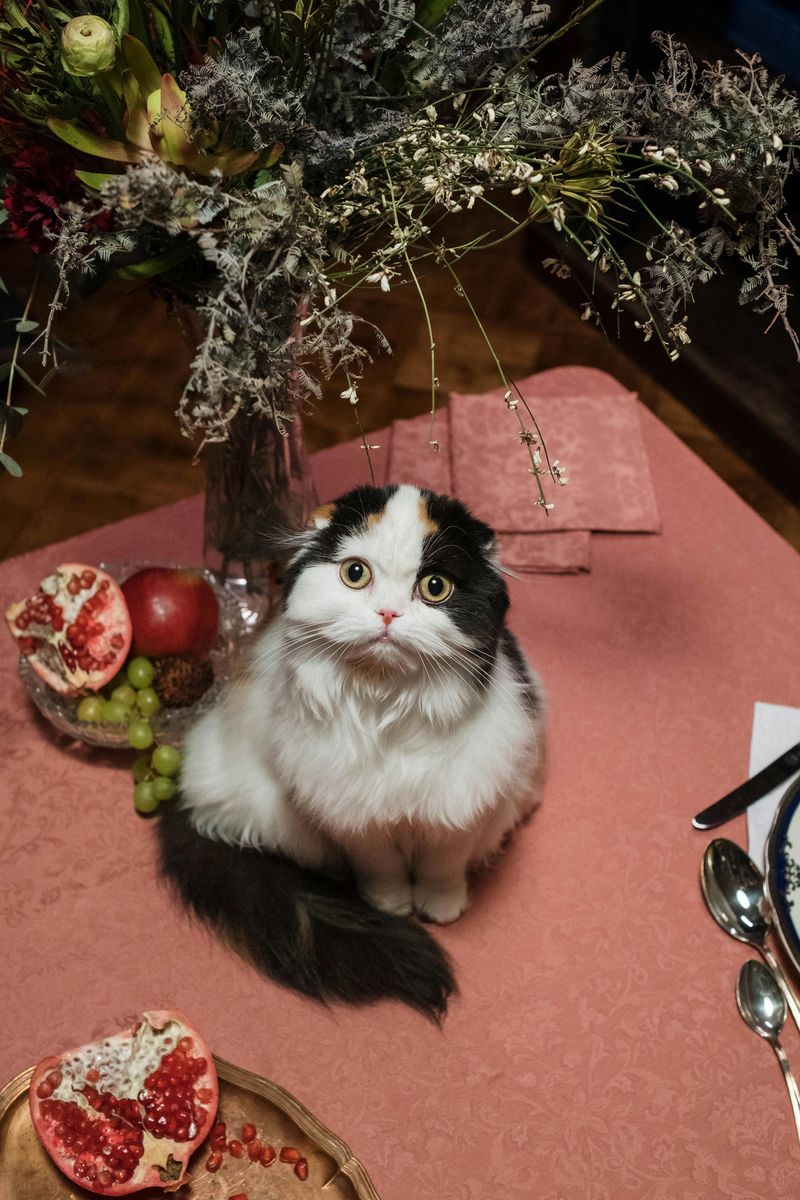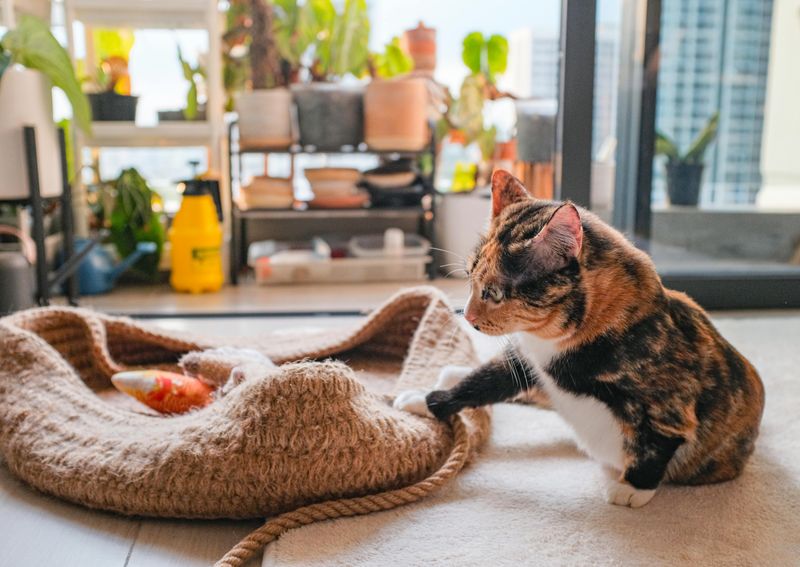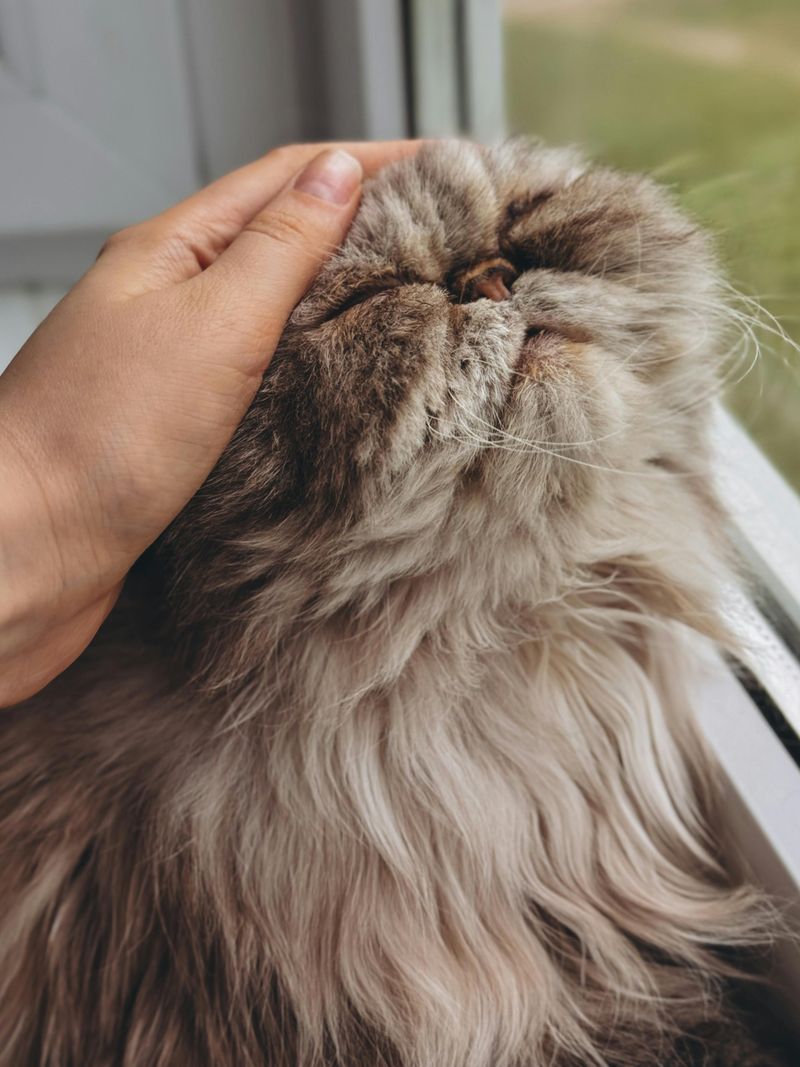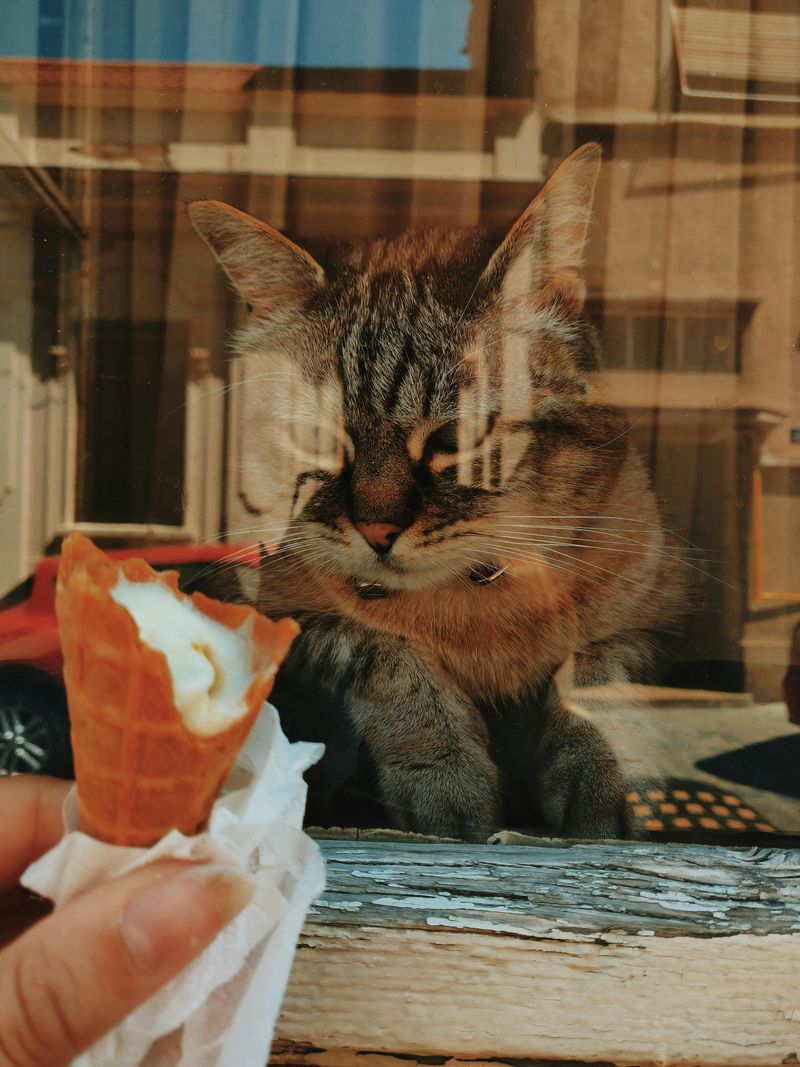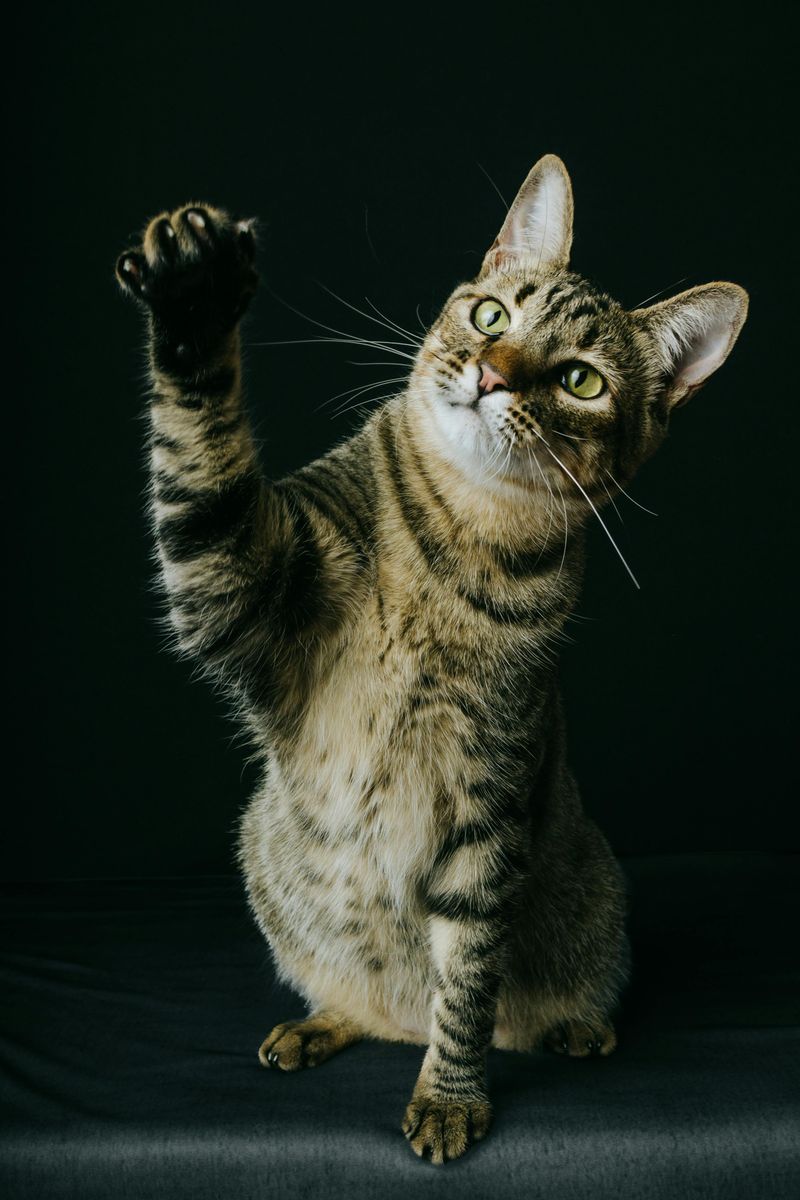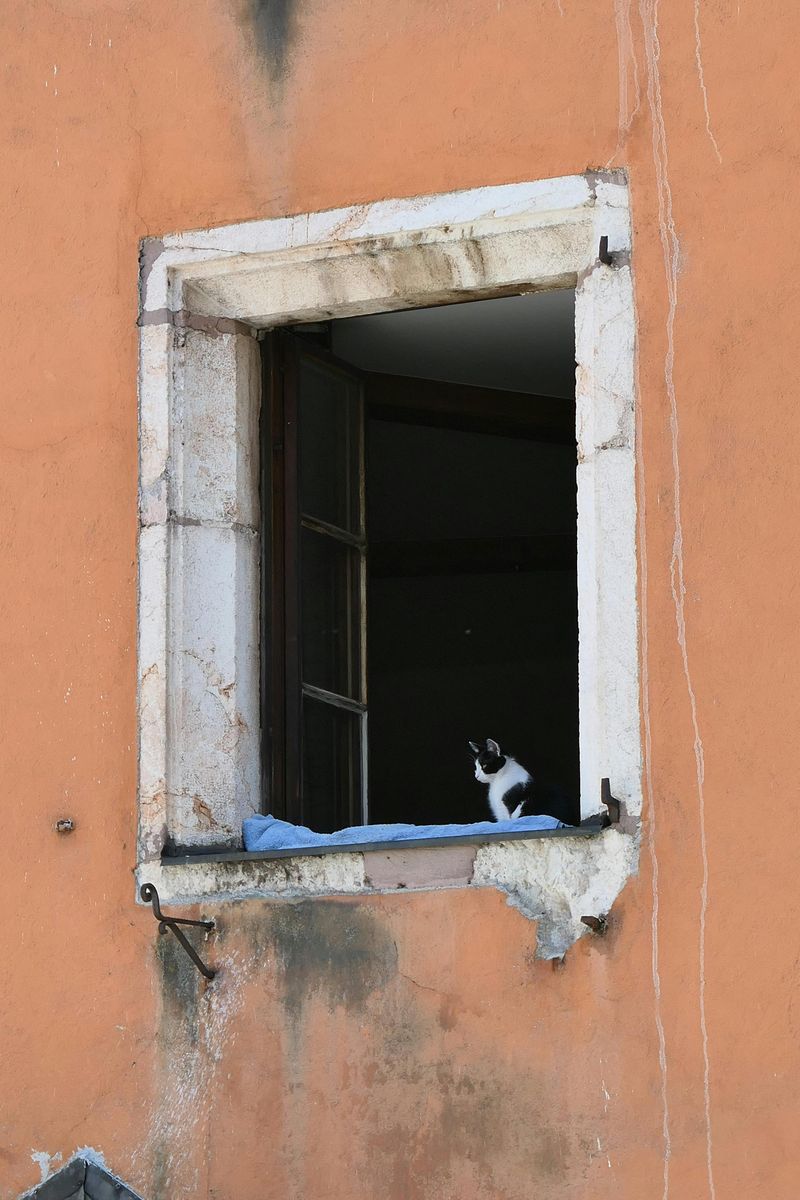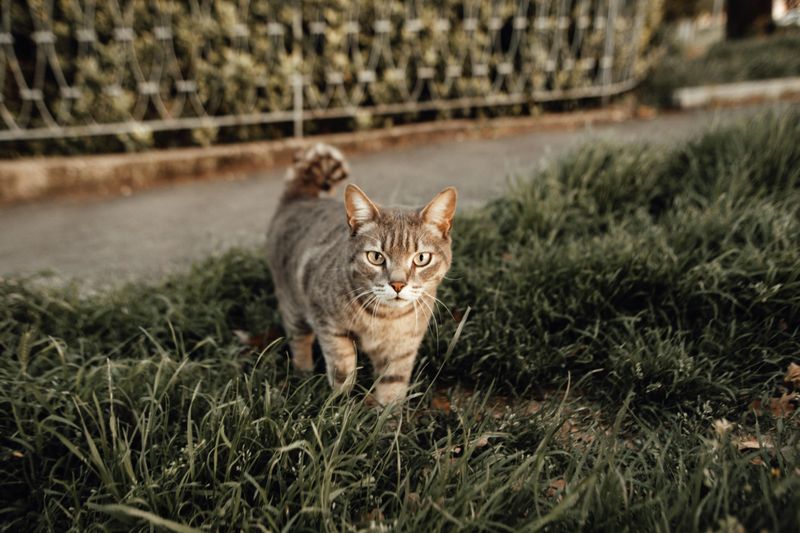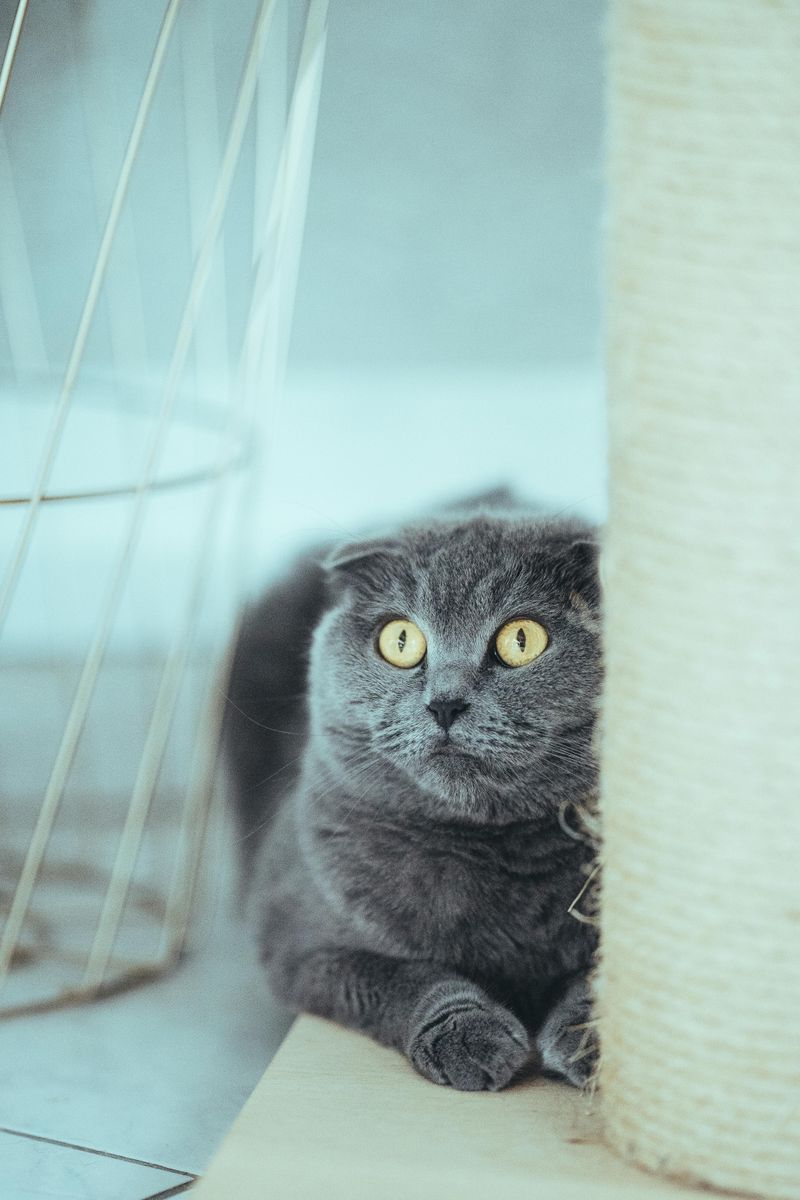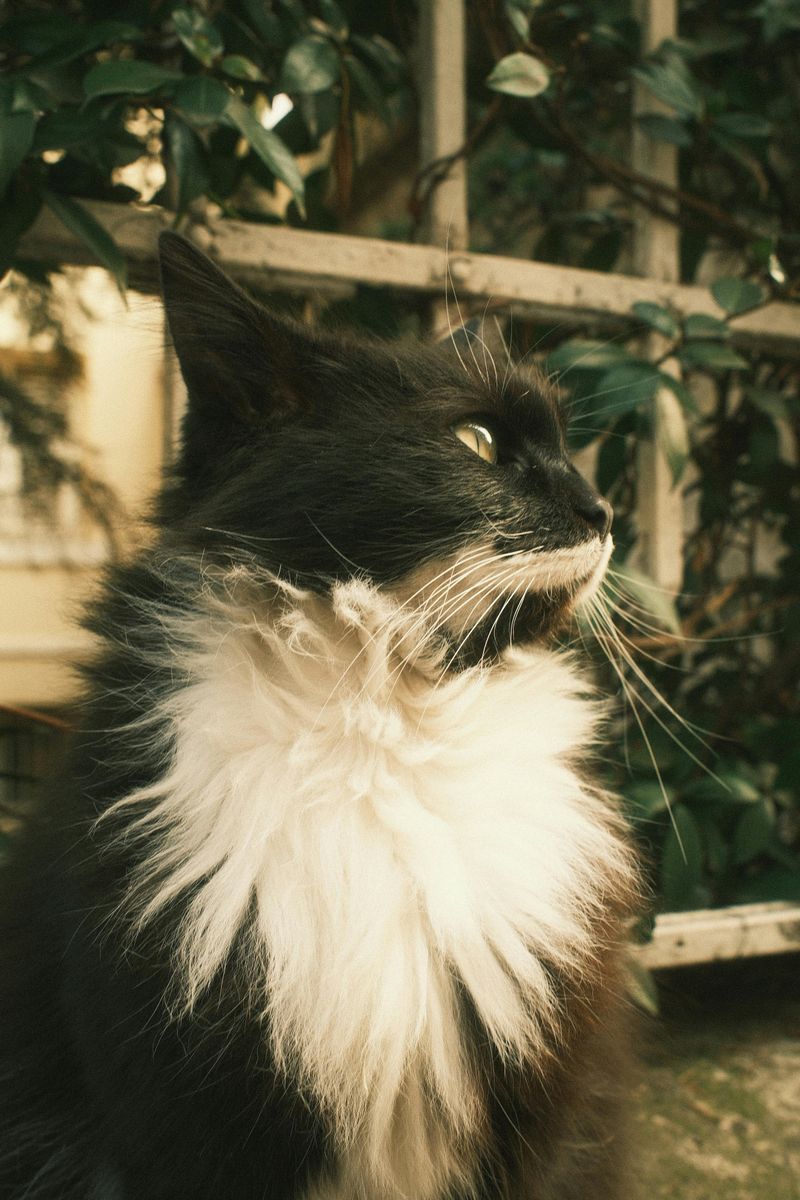📖 Table of Content:
- 1. Meowing for Attention
- 2. Waking You Up at Odd Hours
- 3. Ignoring You Until They Want Something
- 4. Knocking Things Over
- 5. Sitting on Your Work or Laptop
- 6. The Sudden Zoomies
- 7. Rubbing Against You
- 8. Refusing Food Until You Offer a Preferred Option
- 9. Staring You Down
- 10. Pawing or Tapping You Repeatedly
- 11. Claiming the Best Spots
- 12. Bringing “Gifts” (Even Unpleasant Ones)
- 13. Blocking the Door When You Try to Leave
- 14. Scratching Furniture Despite Having a Scratching Post
- 15. Giving You the “Cold Shoulder” After a Trip
Ever feel like you’re just a guest in your cat’s kingdom? You’re not alone—cats have a subtle yet powerful way of asserting dominance over their humans. Before you know it, you’re adjusting your schedule and habits to fit their needs.
From demanding breakfast at the crack of dawn to taking over your favorite chair, cats ensure they get what they want. Their sneaky training methods include ignoring commands, guilt-tripping you with their stares, and insisting on being the center of attention. Whether it’s meowing for treats or pawing at you for affection, they always find a way to get their way.
Without even realizing it, you’ve likely been molded into the perfect cat servant. You instinctively respond to their meows, leave space for them on the bed, and let them interrupt your work. In the end, your cat isn’t just a pet—they’re the true ruler of the house, and you wouldn’t have it any other way.
1. Meowing for Attention
Cats are masters at using their vocal cords to get what they want. A particular meow might lead you to feed them, while another demands a door to be opened. It’s impressive how quickly they learn which specific sounds yield the best results. Often, a cat’s meow can sound pitiful or demanding, yet it effectively conveys urgency. You’ll find yourself responding almost instinctively, as if on cue. Over time, you become attuned to their vocal requests, realizing that your day is subtly orchestrated by their whims. Truly, your cat’s meow is their secret weapon in controlling your actions.
2. Waking You Up at Odd Hours
If your cat has ever pounced on your bed before sunrise, or pawed at your face while you’re in deep slumber, you’re not alone. Cats have an uncanny knack for waking their owners at the crack of dawn. It’s not just an early morning greeting; it’s a strategic move to ensure their breakfast is served on their schedule. This routine quickly conditions you to their preferred timetable. Each pre-dawn wake-up call reinforces the notion that your cat’s needs are paramount. Over time, you adjust, perhaps begrudgingly, to their unique sense of time management.
3. Ignoring You Until They Want Something
These masters of aloofness love ignoring you entirely until they have a specific desire. This behavior teaches their humans that affection is not freely given but is earned, usually with food or playtime. When a cat suddenly shifts from indifference to affection, you know there’s an underlying motive. It’s a clever tactic that ensures they get what they want, on their terms. This selective attention not only keeps you on your toes but also reinforces their dominance. Your role becomes catering to their whims, proving once again who’s really in charge.
4. Knocking Things Over
It’s not just mischief—it’s a calculated move. This behavior captivates their human’s attention, testing how quickly you respond. As you rush to pick up the fallen objects, your cat observes with satisfaction, reinforcing that they hold the reins. It becomes a game, where the cat determines the rules and you, the player, must react. The clatter of falling objects serves as a reminder of their presence and influence. Over time, you may even begin to preemptively cater to their whims, preventing mishaps before they occur.
5. Sitting on Your Work or Laptop
When your cat saunters onto your keyboard or sprawls across your work documents, it’s more than mere curiosity. They’re demanding your undivided focus, steering your attention away from mundane tasks to them. This behavior, while seemingly disruptive, is a testament to their belief that your time is best spent adoring them. It’s a clever tactic: by becoming the center of your universe, your cat ensures you prioritize them above all else. As you navigate around their furry form, you realize they’ve masterfully turned your workspace into their personal lounge, with you as their attentive host.
6. The Sudden Zoomies
Late-night sprints, often known as the ‘zoomies,’ are a cat’s way of injecting excitement into the household. These unexpected bursts of energy might prompt you to engage, whether through play or simply acknowledging their vivacity. The sudden commotion can be startling, yet entertaining, a reminder of your cat’s lively spirit. As you watch them dash from room to room, you’re drawn into their world of spontaneous playfulness. This behavior subtly encourages you to interact more, ensuring your cat remains the focal point of your attention, and solidifying their role as the household’s main entertainer.
7. Rubbing Against You
This action marks you with their scent, declaring ownership. It’s a strategic move to ensure you’re reminded of their presence and importance. As they brush against you, you instinctively reach down to pet them, reinforcing the bond they initiate. This behavior is their way of demanding attention, whenever they decide it’s warranted. Over time, you find yourself responding automatically to their touch, a testament to their subtle control over your actions. In these moments, you acknowledge their role as a cherished companion.
8. Refusing Food Until You Offer a Preferred Option
Ever presented a meal to your cat, only to have it sniff disdainfully and walk away? This selective eating is their way of training you to cater to their culinary preferences. By refusing the initial offering, your cat compels you to present a tastier alternative. This behavior not only highlights their discerning palate but also reinforces their position as a gourmet connoisseur. Over time, you learn to anticipate their tastes, ensuring their meals meet their high standards. This picky approach to dining serves as a constant reminder of your role in fulfilling their desires.
9. Staring You Down
The long, unblinking stare of a cat can be incredibly commanding. It’s their silent way of communicating a demand, whether it’s for food, attention, or the opening of a door. This intense gaze can be hard to ignore, often prompting you to comply without a word spoken. The power of this look lies in its simplicity and persistence. As you respond to their silent commands, you recognize the subtle yet potent influence they wield. Over time, you become adept at interpreting these non-verbal cues, underscoring your cat’s role as the quiet overseer of your interactions.
10. Pawing or Tapping You Repeatedly
This action serves as a gentle reminder of their needs, whether it’s for food, affection, or playtime. The repetitive tapping is hard to ignore, nudging you into action. As you respond, you reinforce the understanding that their desires come first. Over time, you become attuned to this silent communication, reacting almost automatically to their cues. This behavior underscores a fundamental truth: your cat’s requests are not mere suggestions, but commands that shape your daily routine.
11. Claiming the Best Spots
Cats have an uncanny ability to find and claim the coziest spots in the house. Whether it’s your favorite chair, the sunniest windowsill, or your pillow, they make it their own. This territorial behavior subtly trains you to adjust your surroundings to their preferences. As you find yourself offering up prime real estate to your feline friend, you acknowledge their authority over household comforts. Over time, you might even rearrange furniture to better suit their lounging habits. This quiet demand for comfort is yet another way your cat asserts its influence, ensuring their needs are met first.
12. Bringing “Gifts” (Even Unpleasant Ones)
When a cat presents you with a ‘gift,’ whether a toy or something less appealing, it’s a gesture of their hunting prowess. This behavior encourages you to acknowledge their skills, perhaps engaging in play or offering praise. The act of gift-giving, albeit sometimes messy, is a way for your cat to draw you into their world. As you react—be it with laughter or mild dismay—you reinforce their role as a provider. Over time, you come to appreciate these offerings as tokens of affection, understanding their unique way of connecting with you.
13. Blocking the Door When You Try to Leave
Some cats have the peculiar habit of positioning themselves in front of doors, obstructing your path as you attempt to exit. This behavior is more than mere curiosity; it’s a deliberate tactic to delay your departure. By physically blocking your way, your cat subtly communicates their desire for your presence. As you navigate around their furry blockade, you realize they’ve once again asserted their influence. This strategic positioning reinforces your role as a captive audience, ensuring your plans align with their preference for companionship. In these moments, you acknowledge their dominion over household movement.
14. Scratching Furniture Despite Having a Scratching Post
If your cat prefers your furniture over their scratching post, it’s not just about claw care—it’s about control. This forces you to experiment with different tricks to guide their behavior, from using catnip to repositioning the post in a more appealing spot. Despite your efforts, your cat always seems to have the final say in what’s acceptable. In trying to protect your furniture, you slowly realize that compromise is inevitable. Your home decor choices start revolving around their needs, whether that means covering certain areas or investing in more scratch-friendly options. Eventually, you accept that your cat isn’t just a pet—they’re the unchallenged interior designer of the house.
15. Giving You the “Cold Shoulder” After a Trip
Upon returning from a trip, you might find your cat greeting you with indifference. This ‘cold shoulder’ is their method of expressing displeasure at your absence. It serves as a reminder of their expectation for consistent attention. As you attempt to win back their affection—perhaps with treats or extra cuddles—you realize they’ve successfully orchestrated a scenario where you compensate for your time away. This behavior underscores their ability to influence your actions, ensuring their needs for companionship and attention are prioritized. Over time, you learn to anticipate and prepare for these subtle emotional negotiations.
